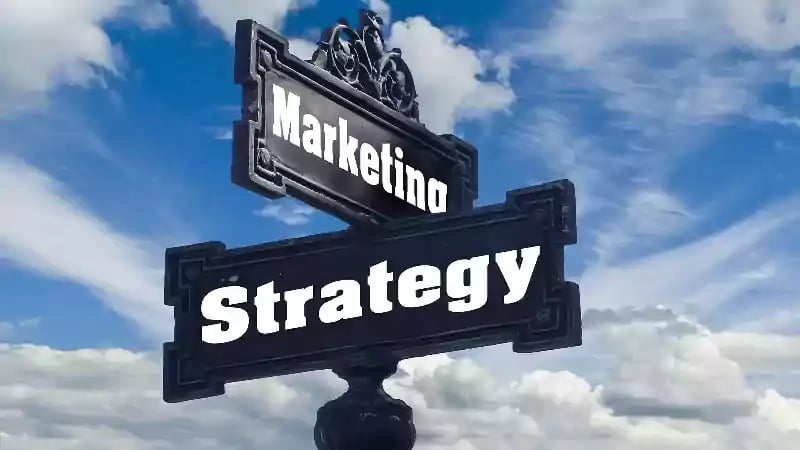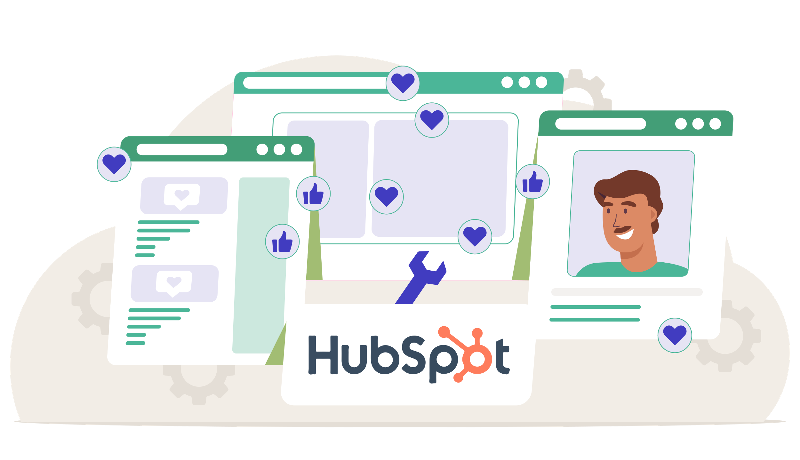Discover how HubSpot Marketing Hub can revolutionize social media marketing. Automate multi-channel postings and leverage AI to maximize engagement.
Is Social Media Marketing Different Than Traditional Marketing?
Traditional marketing, inbound marketing, social media marketing, content marketing, online marketing, outbound marketing, "push" marketing? Sometimes it seems like the marketing world has gotten a bit overly complex in recent years, doesn't it? So what ARE the differences between all those seemingly different niches listed above?
In reality, the differences in Social Media for B2B come down to the direction of your marketing activities and the location.
Direction as in push or pull, outbound or inbound. And location, as in online or off.
That's all you need to know on the surface. For today's deeper dive, we're looking at the primary differences in technique between one subset of online, inbound marketing—social media—and traditional marketing, also called outbound or push marketing.
Let's start with a quick description of these terms:
Traditional/Outbound/Push Marketing
Most of us think of this set of phrases when we think of advertising. Print media, billboards, flyers that come in the mail, and even old-fashioned cold calling all fit this category. Several online tactics, such as pay-per-click banner ads and unsolicited blast emails, can also be found under this heading.
The bottom line is this is a one-way monologue, with the marketer speaking on behalf of the company, talking to their audience, whether they asked a question about the product or not. The goal is to increase sales.
Inbound/Content Marketing:
The new kid on the marketing block, this school of thought is about creating a two-way conversation between company and customer, or brand and audience if you prefer.
Inbound consists of content marketing, blog posts, social media presence, and heavily targeted ads and emails. The goal here is to attract more social media followers to your site and provide value so that when the audience member is ready, they'll come right to you to make a purchase without any further action on your part.
Traditional Push Marketing vs. Social Media Marketing: The Showdown
Each set of marketing techniques comes with its positives and negatives. The key is to know what to pull from which playbook and when to deploy each set of styles and tactics to impact your customers, your product, and your goals most.
Traditional Marketing Plusses
-
Well-established and time-tested. This isn't called "traditional" without cause. The tactics and techniques here can be connected in a straight line to the origins of marketing in the late 19th century.
-
It can be extremely effective at elevating sales numbers quickly. That's mainly down to the law of large numbers. Print ads reach millions of people simultaneously, so logic says a certain percentage will be ready to buy.
-
Expected in many sectors. When did you last see a social media ad for a mobile phone service? How about a billboard? Exactly.
-
Tradeshows are awesome for putting a face on the company. That way, your audience has someone to associate with the product and will remember your smiling, good-natured banter.
Traditional Marketing Minuses
-
Expensive. Getting that print ad in the papers and that billboard up along the freeway are not cheap endeavors.
-
A high bar to entry. The costs involved in publishing the ad and the additional costs of having it produced in the first place. Writers, designers, graphics, and so on all add up fast.
-
No effective targeting. You can choose which paper edition to go in or which stretch of freeway to put up your billboard, but that's about it for targeting. You cannot control who sees the ad, making it difficult to tailor its content effectively.
-
Difficult to track effects. Since these are primarily analog techniques, they don't have a good way to track metrics.
You Might Also Like This Post:
Social Media Marketing Plusses
-
Cheap. Regarding person-hours, especially when considering how much of your presence can be automated with the strategic use of marketing automation software.
-
Ad targeting is easy and accurate. Most major social media outlets offer dashboards where you can develop your audience profile down to the zip code and whether or not they like pineapple on their pizza.
-
Massive numbers of people to get your message in front of. In terms of your overall presence, posts, interactions, etc., millions of people are on social media daily, so your chances of hitting the right person at the right time increase exponentially.
-
Multi-media possibilities. Film a product release, or a day-in-the-life of your street team, create an infographic detailing the amazing ways your widget will solve your audience's problems, or write a lengthy thinkpiece about the state of your industry. All of these have a place on social media.
-
Engagement. Likes, comments, re-posts, and shares can encourage your followers to engage with your social media team (even if that's just you for now).
Social Media Marketing Minuses
-
It can be time-consuming. Without strategic use of automation, social media can quickly become just as addictive for marketers as it can be for the general public.
-
Requires constant updates to stay relevant. With the speed of timelines, if you’re not posting something multiple times per day, you won't see the ROI from this one.
-
Many channels to choose from. It's easy to find yourself posting to a dozen sites in an attempt to reach everyone at the same time. This goes back to the first item on this list.
-
Easy to become overwhelmed by data. Every platform has its dashboard where you can dig into the metrics on how your presence is performing. The problems arise when you're unclear on which metrics you care about and get lost in the data weeds.
Traditional and Social Overlap and Interplay
The true strengths of these marketing methods come out when you realize how much overlap there is and start to develop your own push-and-pull mash-up.
It's in this gray area where the biggest ROI benefits can be found.

Try an email blast that contains content designed to address a specific pain point, then links to an eBook for a deeper dive. Or how about using QR codes on your promotional materials that link people to a landing page for gated content developed specifically for attendees of that conference? On a basic level of cross-over, you can create a landing page just for special events, full of links and content targeted at the same audience as the event.
The growth of what's being called "hybrid" marketing shows that there are creative ways to blend old-school and cutting-edge in and outbound techniques to create a marketing campaign that is unique to you and your product. Think outside the box, formulate your integrated strategy, and see how you can put this theory to work for your next campaign.










Leave a Comment